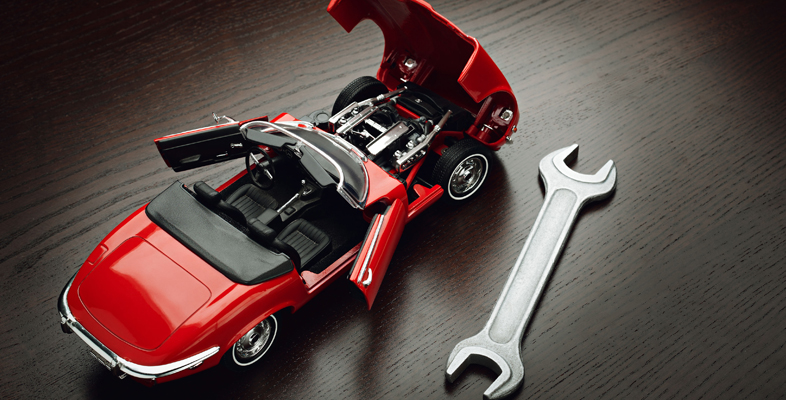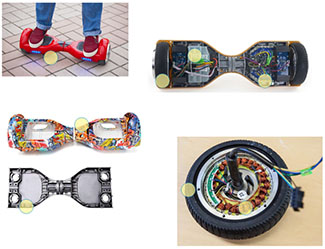3.3 The hoverboard
You have seen examples of the influence of newly developed structural and functional materials on the ‘creation’ of new toys. As you approach the end of this course, consider the hoverboard shown in Figure 15.
A hoverboard is a self-balancing motor-driven personal transporter. Sophisticated electronic logic boards control the balance through gyroscopes (devices used to control stability), and the speed and direction of motion through pressure sensitive controllers.
The key components of the hoverboard, namely high-capacity energy storage systems, energy-efficient motors, sophisticated electronic logic boards, sensitive gyroscopes as well as high-strength structural alloys and polymers are shown in the following figure.
Clearly, high-capacity batteries in combination with energy-efficient motors are needed to maximise the distance that can be travelled per charge. Similarly, high-precision gyroscopic systems and sensors are essential to ensure the stability and controllability of the hoverboard and hence the safety of the rider. Perhaps the least technologically demanding parts of a hoverboard seem to be its load-bearing components, such as the chassis, wheel bearings and drive shaft. However, optimum design and selection of materials for such components will require an insightful understanding of the loading mechanisms.

